Welcome to the world of Print on Demand (POD). If you’ve ever considered turning your creative ideas into tangible products, or if you’ve been curious about how online stores can sell such a vast array of unique designs, then you’re in the right place.
What is Print on Demand (POD)?
Print on Demand is a business model where products are created only after a customer orders them. Instead of holding a large inventory, items are printed, packed, and shipped directly to the customer once an order is placed. This model is especially popular for apparel, mugs, posters, and books, but its possibilities are continually expanding.
Why is Print on Demand becoming so popular?
The beauty of Print on Demand is its simplicity and low upfront cost. You don’t need to invest in a bulk order of 500 t-shirts hoping they’ll sell. Instead, each product is printed as the orders come in. This reduces the risk for new entrepreneurs and allows for a vast range of designs since you’re not limited by inventory constraints.
Understanding the Basics of Print on Demand
What is a Print on Demand Business? A simple definition for beginners
Print on Demand is essentially a digital printing technology that allows you to print items on an as-needed basis. Think of it as an on-demand service: instead of printing a large quantity of items all at once (like traditional printing methods), you only print an item when someone orders it.
How does Print on Demand work? A step-by-step overview
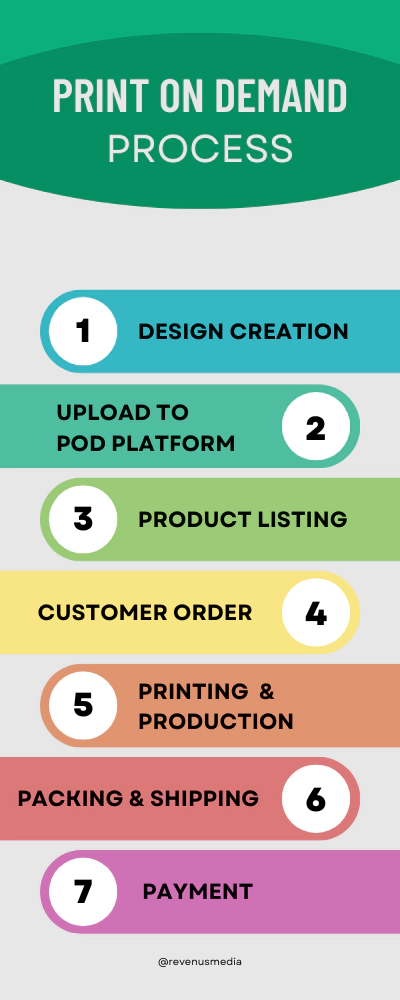
- Design Creation: It all starts with a design. Whether it’s a graphic for a t-shirt, a pattern for a mug, or artwork for a poster, you’ll need a digital design ready to be printed.
- Upload to a Print on Demand Platform: Once your design is ready, you upload it to a platform of your choice (like Printful, Teespring, or Merch by Amazon).
- Product Listing: On the platform, you’ll select which products you want your design to be available on (e.g., t-shirts, hoodies, mugs) and set your selling price.
- Customer Order: A customer visits the platform, sees your product, decides to make a purchase, and places an order.
- Printing: Once the order is confirmed, the platform prints your design onto the chosen product using specialized printers.
- Packing & Shipping: After printing, the product is packed and shipped directly to the customer. You don’t have to handle any of the logistics.
- Payment: The platform takes care of payment processing. Once the order is complete, you receive your profit (the selling price minus the base price of the product and platform fees).
Why Choose Print on Demand?
Benefits for newcomers

- Low Startup Costs: Unlike traditional retail, where you’d need to buy stock in bulk, with Print on Demand, there’s no need for a hefty initial investment. You only pay for the product once a customer orders it.
- No Inventory Hassles: Say goodbye to the worries of unsold stock, storage costs, or inventory management. Print on Demand platforms handle all of that for you.
- Flexibility in Design: Whether you have one design or a hundred, you can offer them all without any additional costs. This allows for constant creativity and updating of product lines.
- Reduced Risk: With no need to buy products upfront, the financial risk is significantly lower. If a design doesn’t sell, you can simply replace it without any losses.
- Global Reach: Most Print on Demand platforms offer worldwide shipping, allowing you to sell your products to a global audience without the complexities of international shipping.
Potential challenges and how to overcome them
- Slightly Higher Unit Costs: Since products are printed individually, the cost per item can be higher than bulk printing. However, the absence of inventory costs often balances this out.
- Limited Customization: While Print on Demand offers a wide range of products, materials or printing techniques might be limited. It’s essential to choose a platform that aligns with your needs.
- Dependency on Platforms: Your business relies heavily on the Print on Demand platform. If there are any issues with their service, it could affect your brand. Ensure you choose reputable platforms and consider diversifying across multiple platforms.
- Quality Control: As you don’t handle the products directly, there might be concerns about quality. Regularly order samples to check the quality and ensure it meets your standards.
You Might Also Like:
Exploring Different Print on Demand Platforms
The Print on Demand industry has seen a surge in platforms catering to various needs, from apparel to home decor. Each platform offers its unique features, benefits, and challenges. Let’s take a closer look at some of the most popular ones:
Printful
Printful is one of the most well-known Print on Demand platforms. It offers a wide range of products, from t-shirts to home decor. With its easy integration with e-commerce platforms like Shopify and WooCommerce, it’s a favorite among many online store owners. They pride themselves on quality and offer custom branding options for packaging.
Printify
Printify operates slightly differently by connecting merchants with print providers. This means you can choose from a variety of print providers based on location, product range, and price. It offers a broad product catalog and integrates seamlessly with popular e-commerce platforms.
CustomCat
CustomCat boasts a fast production time, often shipping products within 2-3 business days. They have a diverse product range and offer both DTG (Direct to Garment) and embroidery options, making them versatile for different design needs.

JetPrint
JetPrint specializes in watch and clock printing, though they offer other products as well. Their unique niche makes them a go-to for those looking to design custom timepieces.

Spreadshirt
Spreadshirt is both a marketplace and a custom print platform. Designers can upload their designs for others to purchase or create their own custom products. They offer a wide range of apparel and accessories.

TPOP
TPOP is based in Europe and emphasizes its eco-friendly approach. They use organic materials and ensure that their production process is sustainable, appealing to environmentally-conscious brands.

Teelaunch
Teelaunch offers a diverse range of products, from apparel to home goods. They focus on providing high-quality print results and have a user-friendly interface, making the design process smooth.

Gelato
Gelato stands out with its global network of printers. This means products are printed closer to the customer, resulting in faster shipping times. They offer a vast range of products and printing options.
Gooten
Gooten operates on a partnership model, connecting businesses with print providers. Their platform is known for its flexibility, allowing businesses to choose their preferred print partners.
Redbubble
Redbubble is a global online marketplace where artists can upload and sell their designs. It’s user-friendly for designers, and they handle everything from printing to shipping. The platform offers a wide variety of products, from apparel to stickers.
Society6
Society6 is similar to Redbubble in that it’s a marketplace for artists. It’s known for its high-quality products, especially in the home decor segment. Artists can set their margins, giving them control over their earnings.
Teepublic
Teepublic is another artist-driven platform where designers can upload their artwork to be sold on a variety of products. It’s known for its regular sales, making it a favorite among bargain-loving consumers.
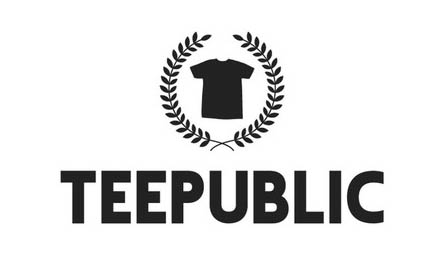
Getting Started with Print on Demand
Embarking on your Print on Demand journey is an exciting venture. From conceptualizing designs to seeing your creations come to life on tangible products, the process is rewarding. But where do you begin? Let’s break it down.
Setting up your first Print on Demand store
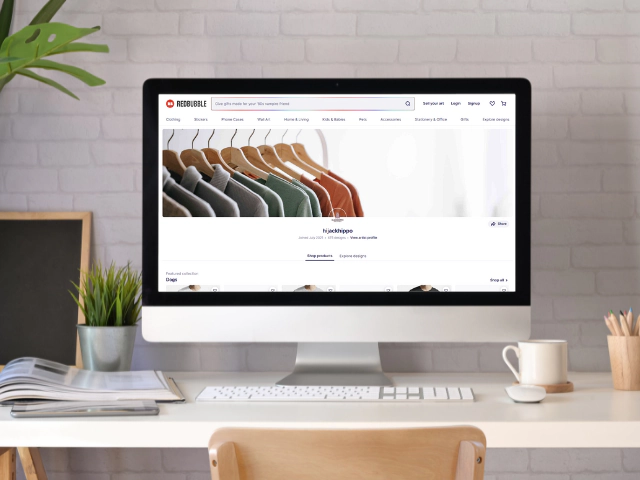
Starting a store, regardless of the platform you choose, generally follows a similar structure:
- Research and Choose a Platform: Research various POD platforms to determine which aligns best with your goals. Consider factors like product range, integration options, and shipping times.
- Account Creation: Sign up on your chosen platform. This typically involves providing basic details and setting up your payment information.
- Design Upload: Once your account is set up, you can begin uploading your designs. Ensure your designs are of high resolution and adhere to the platform’s guidelines.
- Product Selection: Choose the products you want your design to be printed on. This could range from t-shirts and hoodies to mugs and phone cases.
- Pricing: Set a price for each product. Consider the base price set by the platform and decide on your markup to determine your profit margin.
- Store Customization: Customize your online storefront. Add a catchy store name, write compelling product descriptions, and choose a design theme that resonates with your brand.
- Launch: Once everything is set up, launch your store! Share it on social media, with friends and family, and start your marketing efforts.
Design tips for beginners

- Simplicity is Key: Especially when starting, simple designs often resonate well. They’re easy to print and have a broad appeal.
- Understand Color Dynamics: Colors appear differently on screens than on printed materials. Familiarize yourself with color palettes that work well in print.
- Stay Trendy: Keep an eye on current trends. Whether it’s a popular catchphrase, meme, or design style, staying relevant can boost sales.
- Respect Copyright: Always ensure that your designs are original or that you have the right to use certain elements. Avoid copyrighted materials at all costs.
Sourcing Images for Your Products
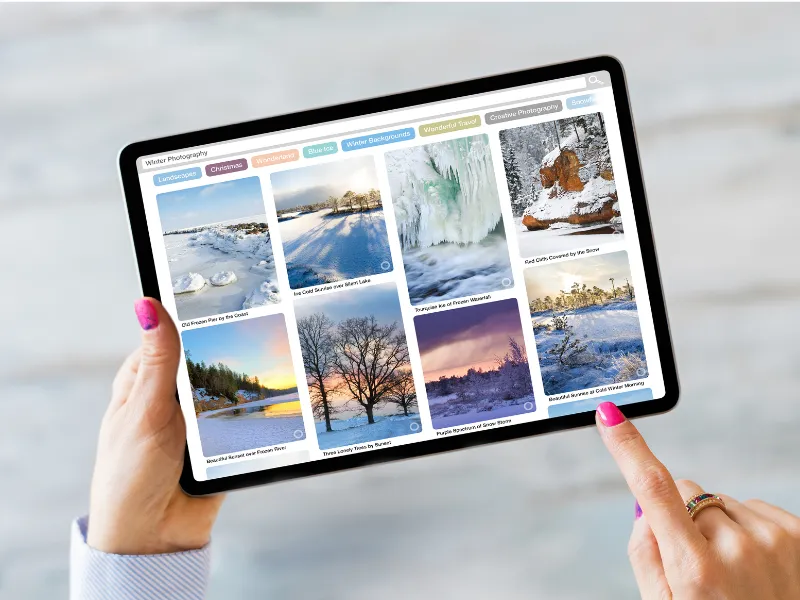
Starting a Print on Demand business means you’ll need captivating designs and images to print on your products. Whether you’re looking for stunning landscapes, quirky illustrations, or professional photos, there are numerous resources available. Here’s a guide to help you find the perfect images for your store:
Free Image Resources
- Unsplash: A platform offering high-resolution photos contributed by photographers worldwide. These images are free to use, even for commercial purposes.
- Pexels: Another fantastic resource for high-quality photos and videos. Pexels ensures all content is free for commercial use and doesn’t require attribution.
- Pixabay: With over 1.7 million stock photos, videos, and music, Pixabay is a treasure trove for creatives. All content is released under the Pixabay License, which makes it safe to use without asking for permission or giving credit.
Paid Image Resources
- Adobe Stock: Integrated with Adobe’s suite of design tools, Adobe Stock offers high-quality stock images, graphics, and videos. It’s especially handy if you use tools like Photoshop or Illustrator for your designs.
- Shutterstock: A global marketplace for artists and creators to sell royalty-free images, footage, vectors, and illustrations. With millions of photos and graphics to choose from, it’s a go-to for many businesses.
- Pond5: A platform offering a diverse range of royalty-free stock footage, music, sound effects, and more. It’s a favorite among video creators and multimedia professionals.
- Depositphotos: A stock photography platform that offers a diverse library of high-quality royalty-free stock photos, graphics, vectors, and videos.
- Dreamstime: One of the world’s largest stock communities with millions of stock photos, vectors, and illustrations. It’s known for its vast collection and affordable pricing.
- Creative Market: A platform for handcrafted, mouse-made design content from independent creatives around the world. It offers graphics, fonts, themes, photos, and more.
- Getty Images: Known for its extensive collection of high-quality photos, including news, sports, and editorial images. While it can be on the pricier side, the quality and exclusivity of its content can be worth it.
Licensing Considerations
When sourcing images, always be mindful of licensing. Even if an image is free, it might have certain restrictions attached:
- Royalty-Free: This doesn’t mean the image is free. Instead, you pay a one-time fee to use the image multiple times for multiple purposes, with few restrictions.
- Rights Managed: You pay for a specific single use of the image, defined by factors like duration, location, medium, and size.
- Creative Commons: A public copyright license that enables free distribution of copyrighted work. There are different types of Creative Commons licenses, each with its own set of permissions and restrictions.
Always read the license terms carefully. If you’re unsure, consider seeking legal advice or reaching out to the platform or photographer for clarification.
Outsourcing in Print on Demand
When you’re diving into the world of Print on Demand, one of the most critical aspects is the design. While some sellers are skilled graphic designers, others might find themselves at a crossroads: learn design or outsource it. Here’s a comprehensive look at outsourcing designs in the Print on Demand space:
Why Consider Outsourcing?
- Expertise: Professional designers have the skills and experience to create high-quality, unique designs that can stand out in the market.
- Time-Saving: Instead of spending hours learning design software and creating designs, you can focus on other aspects of your business, like marketing or customer service.
- Diverse Styles: By hiring different designers, you can offer a variety of styles and designs in your store, catering to a broader audience.
Finding the Right Designer
- Freelance Platforms: Websites like Upwork, Fiverr, and Freelancer are filled with talented designers offering their services. You can browse portfolios, read reviews, and find someone who fits your style and budget.
- Design Contests: Platforms like 99designs allow you to run a contest where multiple designers submit their take on your brief, and you choose the one you like the most.
- Specialized Print on Demand Design Services: Some services specialize in POD designs, understanding the industry’s nuances and requirements.
Best Practices for Hiring
- Clear Brief: Always provide a detailed brief. The more information you give about what you want, the better the results will be.
- Set a Budget: Know your budget beforehand. While you might be tempted to go for the cheapest option, remember that in design, as in many things, you often get what you pay for.
- Ask for Revisions: Ensure the designer offers revisions in their package. This way, if you’re not 100% satisfied with the initial design, they can make changes.
- Understand Licensing: Make sure you’re clear on the licensing of the design. Ideally, you want an exclusive license, meaning the designer can’t resell the design to someone else.
Potential Pitfalls
- Communication Barriers: If you’re hiring designers from other countries, there might be language barriers. Always ensure clear communication.
- Quality Variance: Not all designers are created equal. It’s essential to vet potential designers carefully and check their previous work.
- Intellectual Property Concerns: Ensure the designer isn’t using copyrighted materials in their designs. It’s your responsibility as the seller to ensure the designs you’re selling are free from copyright issues.
Outsourcing designs can be a game-changer for your business, allowing you to offer high-quality, unique designs without the need to become a designer yourself. However, it’s essential to approach the process with care, ensuring you’re getting the best value for your money and designs that resonate with your target audience.
Pricing your products: A beginner’s guide
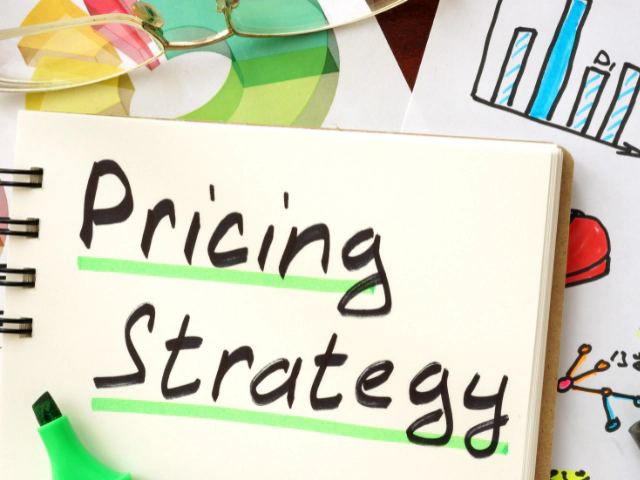
- Understand Costs: Familiarize yourself with the base costs of products on your chosen platform. This is the amount the platform charges for the product and printing.
- Determine Your Markup: Decide how much profit you want to make from each sale. This will be added to the base cost to determine the final selling price.
- Competitive Analysis: Check out competitors’ prices for similar products. This can give you an idea of what customers are willing to pay.
- Factor in Discounts and Sales: If you plan to offer promotions, ensure your pricing strategy can accommodate discounts without compromising profitability.
Auto-uploaders: Exploring the Apps
What are Auto-uploaders?
Auto-uploaders are software tools that allow users to upload their designs to multiple Print on Demand platforms simultaneously. This can save a significant amount of time, especially for those who sell their designs on multiple sites. However, the use of these tools can sometimes be a gray area in terms of platform policies.
Platform Policies on Automated Apps
- Printful: Their Terms of Service doesn’t explicitly mention the use of auto-uploaders. However, they do have an API that allows for integration, suggesting some level of automation is permissible. It’s always a good idea to reach out to their support for clarity.
- Printify: Their User Agreement doesn’t directly address the use of auto-uploaders. Like Printful, they offer an API for integration, which implies some automation might be acceptable. Again, reaching out directly would provide the most accurate information.
- CustomCat: No explicit mention of auto-uploaders in their Terms of Service. It’s recommended to contact their support for a definitive answer.
- JetPrint: Their Terms of Service state that users should not “Engage in any automated use of the system, such as using scripts to send comments or messages, or using any data mining, robots, or similar data gathering and extraction tools.” This suggests that auto-uploaders like LazyMerch and Flying Upload might not be allowed.
- Spreadshirt, TPOP, Teelaunch, Gelato, Gooten, Redbubble, Society6, Teepublic: For these platforms, it’s essential to review their respective terms of service or reach out to their support teams for clear guidelines on the use of auto-uploaders.
Overview of Popular Auto-uploaders
1. Flying Upload
- Description: Flying Upload is an automation tool that helps users upload their designs to multiple Print on Demand platforms simultaneously. It aims to save time and increase efficiency for Print on Demand sellers.
- Supported Platforms: Supports a wide range of platforms, including Merch by Amazon, Spreadshirt, Redbubble, and others.
- Features: Provides keyword suggestions, multi-language translations, and design scaling.
2. LazyMerch
- Description: LazyMerch is a tool designed to drastically reduce the time required to upload designs to various platforms. It automates the process, allowing users to upload to multiple sites with just a few clicks.
- Supported Platforms: Includes platforms like Redbubble, Spreadshirt, Teepublic, and more.
- Features: Offers features like automatic translation, keyword optimization, and design resizing.
3. Merch Titans
- Description: Merch Titans is not just an auto-uploader; it’s a comprehensive suite for Print on Demand sellers. While it does offer automation for design uploads, it also provides other tools to help sellers succeed.
- Supported Platforms: Platforms like Merch by Amazon, Redbubble, Teespring, and more are supported.
- Features: Beyond auto-uploading, Merch Titans offers market research tools, keyword optimization, and analytics.
Auto-uploaders can be a game-changer for Print on Demand sellers, especially those who operate on multiple platforms. They can save a significant amount of time and help streamline operations. However, it’s essential to choose the right tool that fits your needs and to always ensure you’re adhering to the terms of service of each platform you’re using.
Copyright and Print on Demand
In the world of Print on Demand (POD), creativity is at the forefront. However, with the freedom to design comes the responsibility to ensure that the content you’re using respects intellectual property rights. Understanding copyright is crucial for anyone venturing into the Print on Demand space.
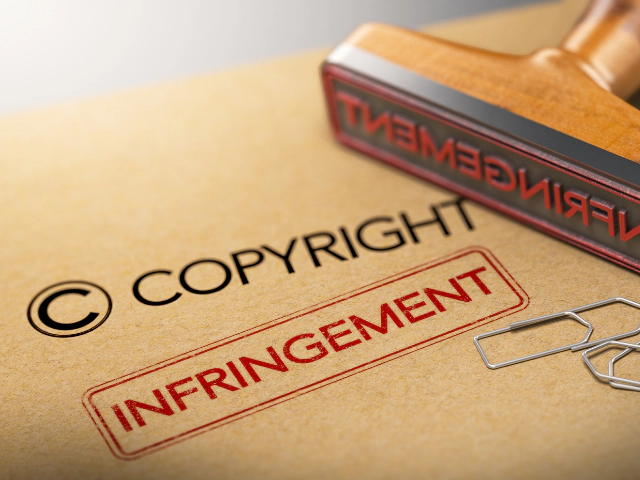
Understanding Copyright Basics
- What is Copyright?
Copyright is a legal right that grants the creator of an original work exclusive rights to its use and distribution. This means that the creator (or copyright holder) has the sole right to reproduce, distribute, perform, or adapt the work. - Duration:
Copyright doesn’t last indefinitely. In many countries, it lasts for the life of the creator plus 70 years, after which the work enters the public domain and can be freely used by anyone. - Fair Use:
Some exceptions allow for the use of copyrighted material without permission, known as “fair use.” This can include uses for criticism, comment, news reporting, teaching, scholarship, or research. However, fair use is a complex area of law and can vary by country. - Public Domain:
Works in the public domain are not protected by copyright and can be freely used by anyone. This includes works for which copyright has expired or works that were never copyrighted.
Types of Licenses
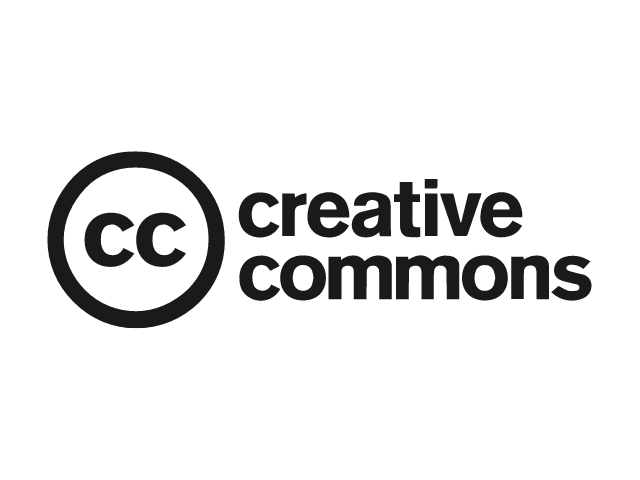
- Creative Commons (CC) Licenses:
Creative Commons is a non-profit organization that offers free legal tools to creators. They provide several licenses, each with different permissions and restrictions:- CC0 (Creative Commons Zero):
This license allows creators to give up all their copyright interests in their works, effectively placing them in the public domain. It’s the most permissive Creative Commons license. - CC BY (Attribution):
This license allows others to distribute, remix, adapt, and build upon the work, even commercially, as long as they credit the original creator. - CC BY-SA (Attribution-ShareAlike):
Similar to CC BY, but derivatives must be licensed under identical terms. - CC BY-ND (Attribution-NoDerivs):
Allows for redistribution, commercial and non-commercial, as long as the work is passed along unchanged and in whole, with credit to the creator. - CC BY-NC (Attribution-NonCommercial):
Allows others to remix, adapt, and build upon the work non-commercially. New works must acknowledge the original creator and cannot be used commercially. - CC BY-NC-SA (Attribution-NonCommercial-ShareAlike):
Allows others to remix, adapt, and build upon the work non-commercially, as long as they credit the creator and license their new creations under identical terms. - CC BY-NC-ND (Attribution-NonCommercial-NoDerivs):
Only allows others to download the works and share them with others as long as they credit the creator, but they can’t change them in any way or use them commercially.
- CC0 (Creative Commons Zero):
- Royalty-Free License:
This type of license allows the buyer to use copyrighted material without the need to pay royalties or license fees for each use or per volume sold. - Rights Managed License:
This is a copyright agreement that allows the buyer to use the copyrighted material for a specific purpose and duration. The terms are clearly defined, and the price is based on usage.
How to Avoid Copyright Infringements
- Original Designs:
Always create original designs. If you’re not the creator, ensure you have the necessary permissions or licenses to use the design. - Avoid Using Trademarks:
Trademarks protect symbols, names, and slogans used to identify goods or services. Using a trademarked term or logo without permission can lead to legal issues. - Licensing and Stock Images:
If you’re using stock images or designs, ensure you have the appropriate license. Some licenses may not allow for commercial use, so always read the terms. - Stay Updated:
Copyright laws and regulations can change. Stay informed about the latest developments in intellectual property rights. - When in Doubt, Seek Legal Advice:
If you’re unsure about the use of a particular design or element, consult with a legal professional specializing in intellectual property rights.
You Might Also Like:
Niche Research Tools for Print on Demand

In the vast ocean of Print on Demand (POD), finding your niche is like discovering a unique island where you can set up shop. A niche is a specialized segment of the market, and in the world of Print on Demand, it can be the difference between getting lost in the crowd and standing out brilliantly. Here’s a comprehensive guide to niche research tools and their importance in the POD industry:
Importance of Finding a Niche
- Targeted Audience: By focusing on a niche, you cater to a specific audience with particular interests, making your marketing efforts more effective and targeted.
- Reduced Competition: While general designs might face stiff competition, niche-specific designs can help you dominate a smaller segment of the market.
- Brand Identity: A niche can help in building a strong brand identity, making your store recognizable and memorable.
- Higher Profit Margins: Specialized products often allow for higher pricing due to their unique appeal to a specific audience.
Tools to Help Identify Profitable Niches
- Niche Scraper: Originally designed for dropshipping, this tool can also be used to identify trending products, which can inspire niche designs for Print on Demand.
- Merch Informer: Specifically designed for Print on Demand sellers, this tool provides insights into what designs are trending, especially on platforms like Merch by Amazon.
- Google Trends: A free tool by Google that shows the popularity of search queries over time. It can help identify rising niches or interests.
- Redbubble Popular: By browsing the “Popular” section on Redbubble, you can get a sense of trending designs and niches.
- Keyword Tool: This tool can help identify niche keywords that people are searching for, providing insights into potential design niches.
- Facebook Ad Library: By browsing ads from other Print on Demand sellers, you can get a sense of what niches and designs are being promoted heavily.
Tips for Niche Research
- Follow Your Passion: If you’re passionate about a particular topic or hobby, consider starting there. Your genuine interest can translate into authentic and appealing designs.
- Stay Updated with Pop Culture: Trends in movies, music, and pop culture can inspire profitable niches.
- Engage with Communities: Join forums, Facebook groups, or Reddit communities related to potential niches. Engaging with these groups can provide insights into what they’re passionate about.
- Analyze Competitors: Look at successful Print on Demand stores and see what niches they’re targeting. While you shouldn’t copy, it can provide a direction for your research.
Finding the right niche is a blend of research, intuition, and creativity. With the right tools and approach, you can identify profitable niches that resonate with your target audience, setting your store up for success.
Analytics: Measuring Your Success

In the dynamic world of Print on Demand (POD), understanding your performance is crucial. Analytics provides a roadmap, highlighting what’s working and what needs improvement. Whether you’re a newbie or a seasoned seller, data-driven insights can guide your strategies and decisions. Here’s a comprehensive look at analytics in the POD space:
Introduction to Analytics for Print on Demand
- What is Analytics?
Analytics refers to the discovery, interpretation, and communication of meaningful patterns in data. In the context of Print on Demand, it involves tracking and analyzing data related to your store’s performance, customer behavior, and sales trends. - Why is Analytics Important?
- Informed Decisions: Instead of relying on gut feelings, make decisions based on concrete data.
- Identify Trends: Spot what products are hot sellers and which ones are lagging.
- Optimize Marketing: Understand where your traffic is coming from and which marketing channels are most effective.
- Enhance User Experience: By analyzing user behavior, you can make improvements to your store’s layout, design, and navigation.
Tools to Track Your Store’s Performance
- Google Analytics: A comprehensive tool that provides insights into your website’s traffic, user behavior, and conversions. It’s free and integrates with most e-commerce platforms.
- Facebook Pixel: If you’re running Facebook ads, the Facebook Pixel tracks conversions, optimizes ad delivery, and provides rich insights about how users interact with your website.
- POD Platform-Specific Analytics: Platforms like Printful, Teespring, and Redbubble offer built-in analytics tools that provide data specific to your store’s performance on their platform.
- Hotjar: A tool that offers heatmaps, session recordings, and surveys. It helps you visually understand how users interact with your site.
- SEMrush: While primarily an SEO tool, SEMrush also provides e-commerce tracking, helping you understand your organic search performance.
Key Metrics to Monitor for a Print on Demand Store
- Traffic Sources: Understand where your visitors are coming from—direct, organic search, paid ads, or social media.
- Conversion Rate: The percentage of visitors who make a purchase. A crucial metric to gauge the effectiveness of your store’s design and product offerings.
- Average Order Value (AOV): The average amount spent by customers in a single transaction.
- Bounce Rate: The percentage of visitors who leave your site after viewing only one page. A high bounce rate might indicate issues with your site’s design or user experience.
- Customer Retention Rate: Measures the percentage of customers who make repeat purchases. A high retention rate indicates customer satisfaction.
- Cart Abandonment Rate: The percentage of users who add products to their cart but don’t complete the purchase. Understanding this can help you implement strategies to recover lost sales.
Analytics isn’t just about numbers; it’s about understanding the story those numbers tell. By regularly monitoring and analyzing your store’s data, you can make informed decisions that drive growth, improve customer satisfaction, and increase profitability.
Design Dimensions for Print on Demand
In the Print on Demand (POD) world, the quality of your designs is paramount. But equally important is ensuring those designs fit perfectly on the products you’re selling. Incorrect dimensions can lead to designs that look stretched, pixelated, or just plain wrong. Here’s a comprehensive guide to understanding design dimensions in the Print on Demand industry:
Basic Dimension Guidelines for Popular Products

- T-Shirts: Typically, the print area for t-shirts ranges from 11×11 inches to 12×16 inches, depending on the platform and shirt size. It’s essential to ensure a resolution of at least 300 DPI (dots per inch) for clarity.
- Mugs: A standard print area for mugs is approximately 8.5 x 3 inches for an 11 oz. mug. Wraparound designs might have different requirements.
- Posters: Dimensions vary based on the size of the poster. Common sizes include 8×10 inches, 12×18 inches, and 24×36 inches, all requiring a resolution of 300 DPI.
- Phone Cases: Given the variety of phone models, dimensions can vary. However, a typical dimension might be 2.9 x 5.6 inches for an iPhone 12, with cutouts for the camera and buttons.
- Pillows: For an 18×18 inch pillow, the design should ideally be of the same dimensions, ensuring it covers the entire visible area.
- Tote Bags: A standard tote bag might have a print area of around 13×13 inches, but this can vary based on the bag’s size.
Importance of Adhering to Platform-Specific Requirements
- Consistent Quality: Each Print on Demand platform has tested its printing processes to determine the optimal design dimensions. Adhering to these ensures your products look their best.
- Avoiding Rejections: Platforms might reject designs that don’t meet their specifications, delaying your product listing.
- Maximizing Print Area: By understanding each platform’s requirements, you can ensure your designs utilize the maximum available print area, leading to more attractive products.
Tips for Design Dimensions
- Use Vector Graphics: Whenever possible, create designs as vector graphics. These can be scaled without losing quality, making it easier to adjust to different product dimensions.
- Check Platform Guidelines: Before uploading a design, always check the specific platform’s guidelines. Platforms like Printful, Redbubble, and Teespring have detailed guides on design dimensions.
- Test Print: If you’re unsure about how a design will look, consider ordering a test print. This gives you a tangible product to assess design size and placement.
- Stay Updated: As new products are introduced or printing technologies evolve, design dimension requirements might change. Regularly check platform updates to stay informed.
SEO for Your Print on Demand Store
What is SEO and Why is it Important for Your Print on Demand Store?
- Definition: SEO stands for Search Engine Optimization. It involves optimizing your online content so that search engines, like Google, show it as a top result for searches of certain keywords.
- Visibility: With millions of online stores, SEO helps your POD store rank higher in search results, making it easier for customers to find you.
- Organic Traffic: Unlike paid advertising, organic traffic from search engines is free. A well-optimized store can attract a steady stream of potential customers without ongoing ad expenses.
- Credibility: Stores that rank higher in search results are often perceived as more credible and trustworthy by potential customers.
Basic SEO Tips for Beginners to Boost Visibility
- Keyword Research: Identify relevant keywords that potential customers might use to find products like yours. Tools like Google Keyword Planner or SEMrush can help.
- Optimize Product Titles: Ensure your product titles are descriptive and incorporate relevant keywords. For instance, instead of “Cool Design T-Shirt,” use “Cool Astronaut Design Men’s T-Shirt.”
- Meta Descriptions: Write compelling meta descriptions for your products and pages. While they don’t directly impact rankings, they can improve click-through rates from search results.
- Image Optimization: Ensure images have descriptive file names and alt tags. For example, instead of “image01.jpg,” use “vintage-car-t-shirt-design.jpg.”
- Mobile Optimization: Ensure your Print on Demand store is mobile-friendly. With a significant portion of users browsing on mobile devices, search engines prioritize mobile-optimized sites.
- Quality Content: Consider adding a blog to your POD store. Regularly publishing relevant and quality content can boost your store’s SEO and position you as an authority in your niche.
- Backlinks: These are links from other websites to your store. High-quality backlinks can significantly boost your SEO. Consider guest blogging or collaborating with influencers in your niche.
- Page Speed: A slow-loading website can hurt your SEO rankings. Optimize images, use a good hosting provider, and consider using Content Delivery Networks (CDNs) to improve load times.
- Use SSL: Search engines prioritize secure websites. Ensure your POD store uses HTTPS, indicating that it’s secured with an SSL certificate.
SEO might seem complex, but even basic optimizations can lead to significant improvements in visibility and traffic. As the POD industry grows, standing out becomes more challenging, making SEO an invaluable tool in your digital marketing arsenal. By understanding and implementing SEO best practices, you can ensure your POD store reaches its full potential.
Complementary Software and Tools
The Print on Demand (POD) industry, while accessible, can be intricate. To streamline operations, enhance designs, and optimize sales, various software and tools can be integrated into your POD journey. These tools not only simplify tasks but can also provide a competitive edge. Here’s a comprehensive guide to some of the complementary software and tools beneficial for POD entrepreneurs:
Overview of Tools That Enhance the Print on Demand Experience
- Design Software:
- Adobe Illustrator & Photoshop: Industry standards for vector and raster graphics, respectively. Ideal for creating high-quality designs.
- Canva: A user-friendly design tool with a plethora of templates, making design creation a breeze even for beginners.
- GIMP: A free alternative to Photoshop, suitable for image manipulation.
- Research and SEO Tools:
- Merch Informer: A tool tailored for Merch by Amazon sellers, offering design insights, keyword optimization, and competition tracking.
- Google Keyword Planner: Helps identify relevant keywords to optimize product listings and descriptions.
- Mockup Generators:
- Placeit: Offers thousands of mockups across various products, allowing you to visualize and promote your designs.
- MockupWorld: A free resource with a vast collection of mockups for different products.
- Automation and Integration Tools:
- Zapier: Connects your store with other apps, automating workflows. For instance, automatically adding new orders to your accounting software.
- Integromat: Similar to Zapier, it helps automate tasks between different online platforms.
- Customer Engagement Tools:
- Tidio or Drift: Chatbots that can engage visitors on your store, answer queries, or guide them through the sales process.
- Mailchimp: Email marketing tool to keep your audience engaged, promote new designs, or offer discounts.
- Analytics and Tracking:
- Google Analytics: Provides insights into website traffic, user behavior, and conversions.
- Hotjar: Offers heatmaps and session recordings, giving a visual understanding of how users interact with your store.
How These Tools Can Help Beginners Succeed
- Efficiency: Tools like Zapier or Integromat can automate repetitive tasks, saving time and reducing errors.
- Enhanced Designs: Using professional design software ensures your designs are of high quality, appealing to a broader audience.
- Informed Decisions: Research and SEO tools provide data-driven insights, guiding your product listings, pricing, and marketing strategies.
- Engagement: Chatbots and email marketing tools ensure continuous engagement with your audience, leading to higher retention and sales.
- Optimized User Experience: Analytics tools provide insights into user behavior, helping you refine your store’s layout, design, and navigation for an optimal shopping experience.
The right set of tools can significantly enhance your business, from design creation to sales optimization. While it might seem overwhelming at first, gradually integrating these tools into your workflow can lead to streamlined operations, better designs, and increased sales. In the ever-evolving world of Print on Demand, staying updated with the latest tools and software can give you a competitive edge.
Conclusion
Embarking on the Print on Demand (POD) journey is akin to setting sail on a vast ocean of opportunities. With the right tools, knowledge, and strategies, even the most novice of sailors can navigate these waters successfully. As we wrap up this comprehensive guide, let’s take a moment to reflect on the key takeaways and chart the course ahead.
Also Read: Build a Successful Print on Demand Business
Recap of the Journey Through the World of Print on Demand
- Understanding the Basics: We began by demystifying what POD is and why it’s gaining immense popularity. The flexibility, low upfront costs, and vast product range make it an attractive business model for many.
- Choosing the Right Platform: With numerous platforms available, each with its unique features and benefits, making an informed choice is crucial. Whether it’s Printful’s extensive product range or Redbubble’s global reach, aligning with a platform that fits your goals is key.
- Design and Creativity: The heart of any POD business is its designs. From understanding copyright nuances to ensuring the right dimensions, the quality and uniqueness of designs can set a store apart.
- Optimizing for Success: Through SEO strategies, analytics, and leveraging complementary tools, we explored how to ensure a store stands out in the crowded digital marketplace.
- Future Trends: The world of Print on Demand is dynamic. Staying updated with the latest trends and adapting to changes ensures long-term success.
Encouragement and Next Steps for Newcomers
- Start Small, Dream Big: Begin with a few designs, gather feedback, and iterate. As you gain confidence and insights, expand your product range and explore new markets.
- Continuous Learning: This industry, like any other, evolves. Regularly update your skills, be it in design, marketing, or technology.
- Engage with the Community: Join Print on Demand forums, attend webinars, and network with fellow sellers. Sharing experiences and learning from others can provide invaluable insights.
- Stay Passionate: Like any business, there will be highs and lows. Remember why you started, stay passionate about your designs, and keep the customer at the forefront.
Final Thoughts
The world of Print on Demand offers a canvas where creativity meets commerce. With the right approach, tools, and mindset, it’s a canvas where dreams can take shape, one design at a time. Whether you’re just starting out or looking to scale, remember that every successful entrepreneur was once a beginner. With persistence, passion, and this guide by your side, the sky’s the limit.









